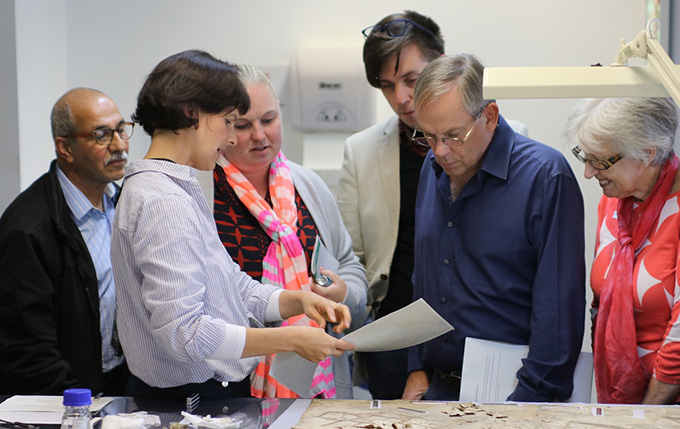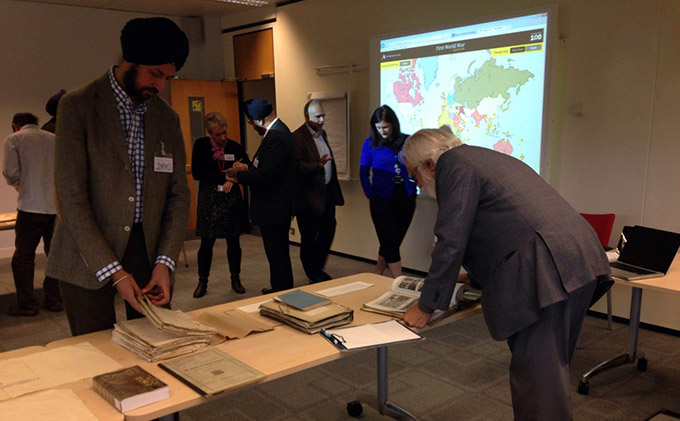I have blogged twice before about my 2018-19 Professional Fellowship, supported by Research Libraries UK and The National Archives. Having introduced this year’s fellowships, and reported on my placement at York University, I promised to come back and update how the research phase was going.
My key aim for the fellowship was to explore how the wider academic discipline of public history could deepen archives’ and special collections’ understanding of audiences, and of our impact on them. This is a really critical question for our work with the wider archives sector, as just counting people who actively visit an archive (typically to do their own research or on a group visit) does not demonstrate effectively how many people are affected by what archives offer. This can have negative effects when presenting cases for supporting archives with parent organisations and funders.
 As often happens with research, my work hasn’t quite gone in the direction I anticipated. Although there are some useful readings on audiences in public history, it has become clear that a lot of people in the field find broad public audiences just as hard to pin down as those working in archives and Special Collections do. Measures of impact do not form a strong thread in the literature, and much of the audience-focused writing I have encountered has been produced by museum professionals, rather than those writing broadly about public history from an academic viewpoint.
As often happens with research, my work hasn’t quite gone in the direction I anticipated. Although there are some useful readings on audiences in public history, it has become clear that a lot of people in the field find broad public audiences just as hard to pin down as those working in archives and Special Collections do. Measures of impact do not form a strong thread in the literature, and much of the audience-focused writing I have encountered has been produced by museum professionals, rather than those writing broadly about public history from an academic viewpoint.
That has been frustrating in a way, but is also useful to know. If anyone would like to take up the challenge of exploring archives and impact through the lens of public history, it remains an area I would be very interested in supporting.
But it hasn’t all been frustration. There are two key pieces of work I am now aiming to produce during the fellowship. The first is a set of principles for public history activity with archives and Special Collections. As a sector, we have substantially increased the amount and kinds of public history activity we do in recent years (exhibitions, online galleries, family and local history festivals, workshops, talks, blogs, tweets and many other social media and outreach activities). But that has not been accompanied by a lot of discussion of what constitutes good practice in public history.
That’s an area where my fellowship reading can make a difference and aim to establish underpinning principles for our work in this area. It will also be a chance to produce short guidance on some topics which interest those working in this area, like how to repurpose content across different media and audiences, and tools for understanding audiences.
 My second piece of work is to develop guidance on understanding impact around three key themes. Impact studies have really grown in recent years, and it has become a very complex area with a lot of writing. Archives and special collections can support impact in myriad ways, especially as the content of collections can be so varied, from health and environmental data to creative practice and life writing. It can be very rewarding to engage deeply with questions of impact, especially for a major project.
My second piece of work is to develop guidance on understanding impact around three key themes. Impact studies have really grown in recent years, and it has become a very complex area with a lot of writing. Archives and special collections can support impact in myriad ways, especially as the content of collections can be so varied, from health and environmental data to creative practice and life writing. It can be very rewarding to engage deeply with questions of impact, especially for a major project.
But for day to day reference, perhaps we need something simpler. With reference to my research, and with particular thanks to Professor Geoff Cubitt at the Institute for the Public Understanding of the Past, York University, I suggest three typical categories of impact for archives and Special Collections in public history:
- Knowledge, skills and learning
- Identity
- Enjoyment and fun
Working with these three very broad categories can help to pin down ongoing impact in a manageable way. They make allowance for different responses in audiences: if someone else’s fun experience is something that deeply touches your identity, you may be experiencing quite different reactions to the same public offering. These categories should help to guide the kinds of evaluation questions that are used: ‘Would you come back to another event like this?’ may be a great question for gauging enjoyment. ‘What do you remember best about the exhibition?’ might work better for learning impact.
For larger projects, exhibitions and activities, working with this framework may also help to shape the way it is developed and the tone it uses. Identity-focused work would very often benefit from being more participatory in its development, and less didactic in tone, for example, as staff at the archive may well not have such insight into the subject as the groups they hope to engage.
I didn’t expect such a high-level theory to come out of my research – I had thought it would probably lead to some simple impact-measurement metrics. But I have learned from this work just how complex metrics development can be, and how meaningless a poor metric is.
I’m glad that colleagues at The National Archives are collaborating with expert body What Works Wellbeing on developing some impact metrics for archives around wellbeing. I am also taking my research into this activity, so it will ultimately contribute to metrics as I had expected when I started out.